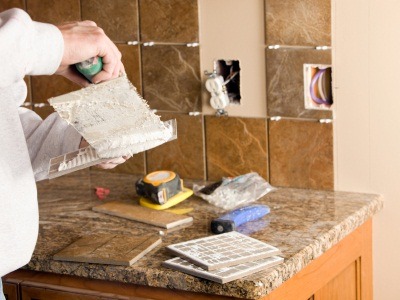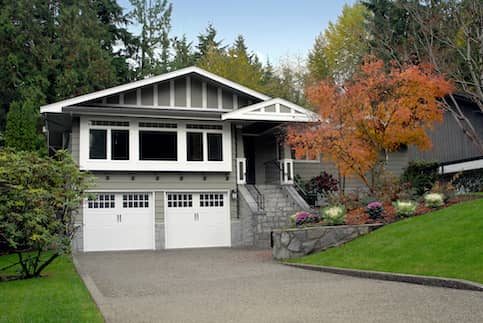Home Equity Loan Vs. Mortgage: What’s The Difference?

If you have a home improvement project or investment opportunity you’re interested in, you may be looking to tap into the value of your home to make that a reality. To that end, you may be looking to understand the difference between a home equity loan vs. a mortgage. This article will break it all down and go through the ins and outs. First, let’s clear something up.
Tackling The Basics: Is A Home Equity Loan A Mortgage?
A home equity loan is indeed a type of mortgage, so that the idea that there’s a difference can be a misconception. However, the confusion arises from the fact that it’s a mortgage taken out separately from – and often after – your primary mortgage.
Some people may not think of their home equity loan is a mortgage because it’s not part of their main house payment. But it’s a mortgage, nonetheless.
See What You Qualify For
Home Purchase
Home Refinance
Tap Into Equity
How A Mortgage Works
A mortgage is a type of loan that relies on your home as collateral. A lender places a lien on your home in exchange for giving you the loan. The lien gives them the right to take the home back if you can’t make the monthly payments. However, the mortgage process is designed to qualify you so that the lender is confident you can handle a house payment.
There are several different types of mortgages you can look at when considering your options. The most common are conventional loans from Fannie Mae or Freddie Mac as well as FHA and VA loans. There are also primary and second mortgages (more on the latter in a minute).
The requirements to qualify for a mortgage vary based on the standards of your lender and the investor in your mortgage – Fannie Mae, FHA, VA, etc. However, generally, lenders will evaluate your income, assets and credit history to determine your eligibility for a home loan. The other thing to consider is the better your credit score and down payment or amount of existing equity, the better you can expect your interest rate to be.
The other big factors impacting your interest rate include how the property is occupied and whether it’s a primary or second mortgage. We’re getting to second mortgages, but occupancy has to do with whether it’s your main home, a vacation property or rental home.
What Is A Second Mortgage?
A second mortgage is one taken out separately from the primary home loan used to purchase or refinance your home. It doesn’t always have to be taken out at a different time from when you would get a primary mortgage, but it usually is.
A second mortgage is subordinate to your primary mortgage. This means that if you default on your payments and the lender sells your property to help recoup their expenses, the primary mortgage holder gets paid first. For this reason, rates on second mortgages are higher than those you would get at any given time on a primary mortgage.
However, the advantage of the second mortgage is that if you have a really low rate on your existing mortgage and don’t want to touch it to access some of your equity, a second mortgage allows you to do this.
Your lender can help you with something called a “blended rate calculation” to determine whether a cash-out refinance or second mortgage makes the most sense for you.
When it comes to second mortgages, there are two options to think about: a home equity loan and a home equity line of credit (HELOC).
From a funding perspective, a home equity loan works exactly like a cash-out refinance because you get a check for the amount of equity you’re taking out in the new loan.
A HELOC has a term that proceeds in two distinct periods: draw and repayment.
During the draw period where you can access as much or as little of your equity is you want through a revolving line of credit that works like a credit card. During this time, you’re only responsible for the interest on whatever you choose to take out. You can also put money back into the HELOC during the draw period so that you can access it later for other projects.
During the latter phase of the HELOC comes the repayment period. At this time, the balance freezes and you can’t take any more equity from the line of credit. For the remainder of the term, you make monthly payments of both principal and interest until the HELOC is paid off.
Get a Home Equity Loan online.
Let’s match you up with lenders who can help with your unique financial situation.
How A Home Equity Loan Works
Home equity loans are mortgages. These loans are known as a second mortgage and are commonly taken out once homeowners have equity built up in their property.
Unlike a HELOC, the funds from a home equity loan are distributed as a lump sum payment, meaning you get the full amount you borrowed all at once. It could be advantageous if you know how much you need.
Another major difference is that you can get it fixed rate. HELOCs often feature variable interest rates like credit cards, meaning the rate can change month-to-month. If it’s not variable, it may also be adjustable, meaning the rate changes at some point.
A home equity loan works just like a primary mortgage in the sense that you will have a monthly payment until the end of the term. The only difference is that you’ll have two separate mortgage payments.
Mortgage Vs. Home Equity Loan
For the purposes of this section, when we refer to “mortgage,” we mean a primary or first mortgage. Where applicable, we’ll speak specifically about the policies of Rocket Mortgage. Policies may vary depending on your lender.
With that, let’s do some comparison.
| Home Equity Loan | Mortgage |
|---|---|---|
Interest Rate | Higher | Lower |
Loan Terms | Varies (generally 10 – 30 years) | 8 – 30 years |
Maximum Loan Amount | Varies | Highly variable based on loan type and location as well as number of units. The nationwide conforming loan limit is $726,200. |
Closing Costs | Can vary, but should be similar to mortgage closing costs | Usually 3% – 6% of the loan amount |
Tax Deductible Limits | You can deduct mortgage interest on balances up to $750,000, but your home equity loan must be used to buy, build or substantially improve your home | Deduct interest on balances up to $750,000 |
When To Consider A Mortgage
Interest rates will always be lower on a primary mortgage than they will be on a home equity loan because home equity loans are second mortgages. However, it’s more complicated than that because if your rate is low enough on your primary mortgage, you may save money on interest by not touching it and taking out a home equity loan. The key is a blended rate calculation.
A blended rate is the weighted average interest rate between your primary mortgage and a hypothetical home equity loan that you could get. If the average is higher than what you can get by taking out a cash-out refinance, it makes sense to refinance your primary mortgage. Otherwise, it makes sense to do a home equity loan when the blended rate is lower than the cash-out refinance rate.
In order to calculate a blended rate, you need to know your current rate and balance on your primary mortgage as well as how much equity you’d be looking to take out and what the proposed home equity loan rate would be.
Let’s say you have a home worth $400,000, and an outstanding mortgage balance of $200,000. You’re looking to take out $100,000 worth of equity. Your primary mortgage rate is 3.25% and you have 20 years left on the term. A 20-year home equity loan in this hypothetical is at 13%. To get a 20-year cash-out refinance, the rate would be 6.375%.
The blended rate calculation is as follows:
(Primary mortgage balance × rate) + (home equity loan balance × rate)
_______________________________________________________
Primary mortgage balance + home equity loan rate
When you plug in the numbers to the formula, in this case, the blended rate comes out to be 6.5%. Because this is higher than the cash-out refinance rate of 6.375%, it makes more sense to do the cash-out refinance.
When To Consider A Home Equity Loan
Again, this is a purely mathematical calculation and we’ll use the same equation and many of the same numbers. In fact, the only thing I’m going to change is the proposed home equity loan rate. Merely by changing that to 10.25%, we get a very different number, holding every other number constant. The blended rate becomes 5.583%.
Because the blended rate is lower than the hypothetical cash-out refinance rate of 6.375%, it makes sense to get a home equity loan rather than change the rate on your current mortgage.
Turn your home equity into cash.
See how much you could get.
The Bottom Line
A home equity loan is a type of mortgage that’s secondary to your primary mortgage. It’s similar to a cash-out refinance in that you get a lump-sum payment for whatever equity you take out. If you’re considering a home equity loan, another option is a HELOC. The difference here is that this is a line of credit at the beginning of the term so you can use the funds as needed before the balance freezes in the latter half of the term.
Whether a cash-out refinance or second mortgage like a home equity loan is right for you is dependent entirely on the blended rate. The math on this can get a little complicated, so we recommend letting your lender help.











